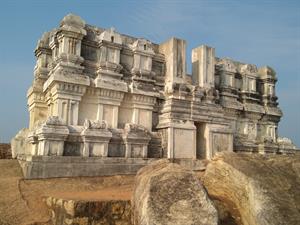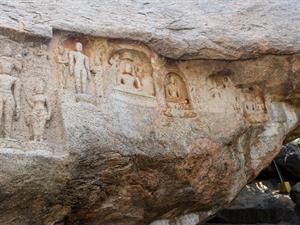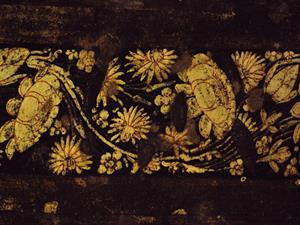PDF chapter test TRY NOW
Tamil Nadu and Jainism:
The division of sects within Jainism marked the advent of Jain principles to the southern part of India. This marked the slow spread of the Ideals and principles of Jainism in Tamil Nadu and other parts of its neighbouring states.
According to the Sangam Literature and other texts, many kings had widely mentioned the influence exerted by the Jainism monks on the rulers of Tamil kingdoms as they gave patronage to various monks during their reign.

Jain Temple in Tamil Nadu
The Northern part of Tamil Nadu is where the researchers believed that the tradition of Jains flourished. Some of the places where Jain concentration was witnessed:
1. Vellore
2. Villupuram
3. Kanchipuram
4. Thanjavur
5. Madurai
Kalabhras: The Kalabhras who ruled Tamil Nadu during the \(3^{rd}\) \(–\) \(7^{th}\) \(\text{Century BCE}\) were the patrons of Jainism.
The Pallava kings, who were the followers of the Hindu religion, also patronized Jainism. Most of the Tamil Nadu followers of Jainism come under the Digambara sect of Jains.
Samanars: The Sangam literature mentions Jain people as “Samanars”, where a hill in Madurai was named under them as “Samanar Malai”, where they had believed to have existed.
One of the finest examples of Jain rock-cut cave temples is found in Sittanavasal which stands the test of time. This exemplary structure is also called the “Arivar Kovil”.
The Cave temple belongs to the \(2^{nd}\) Century Jain complex, which also contains a natural Cavern at one end, which is known as “Eladipattam '' by the locals and rock-cut caves at the other end.
Sittanavasal: The word Sittanavasal in the Tamil language means “abode of the great saints”.
\(17\) Stone beds are found on top of the hill which is believed to be the dwelling place of the Jain monks of Sittanavasal. The Stone carvings also contain names of numerous monks who lived in the mountains of Sittanavasal.

Sittanavasal Rock art
The Tamil – Brahmi inscriptions dating back to the 2nd Century BCE had details regarding the livelihoods of Jain in Tamil Nadu.
The Cave temples of Sittanavasal date back to the Pallava King Mahendravarman I, a great patron of Jainism.
The Caves also contain Ardha Mandapa and Garba Griha, which were built during the reign of a Pandyan King in the \(7^{th}\) Century.
Paintings of Sittanavasal:
The Sittanavasal caves are renowned for their aesthetic Mural and Fresco paintings that shine through the times of history. These paintings are also considered to be the best among the paintings of the Medieval period.
The Paintings and Sculptures in these caves are plastered first and painted later, which were tarnished by the lack of maintenance.

Sittanavasal Mural Paintings
Maharaja of Pudukkottai made strenuous efforts in restoring the paintings of Sittanavasal in \(1937\), and to an extent, he succeeded in reviving the Murals.
Ajanta Caves: The Ajanta caves are located in Maharashtra, well known for their rock-cut cave architecture and Mural paintings. The Sittanavasal paintings are often equated with the paintings of the Ajanta caves.
The Fresco-Secco painting method has been employed in the caves of Sittanavasal which also contains the sculptures of the Tirthankaras on the left side of the wall and the Acharya sculptures on the right side of the wall.
The Murals in these caves are painted with mineral colours obtained from natural sources like Charcoal and Lapis Lazuli.
